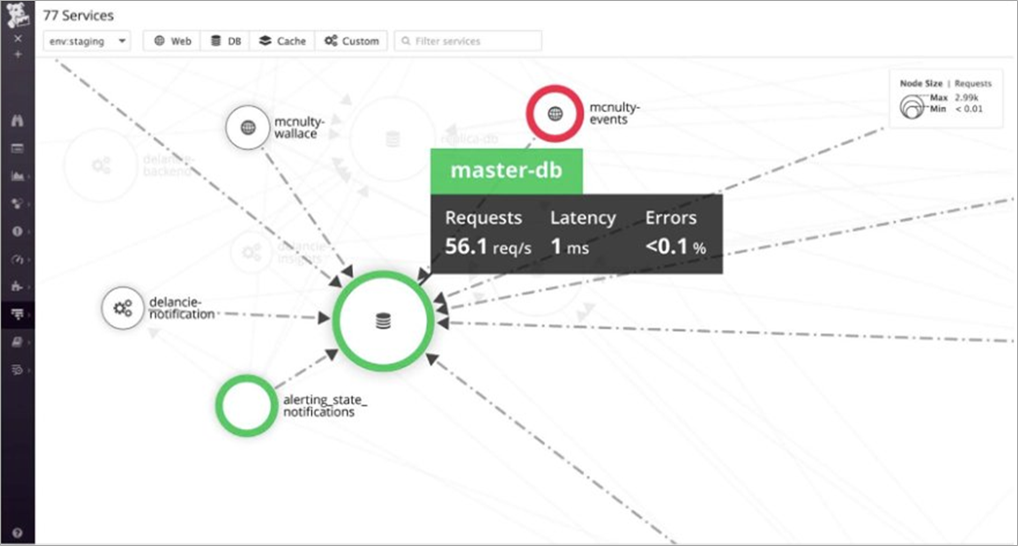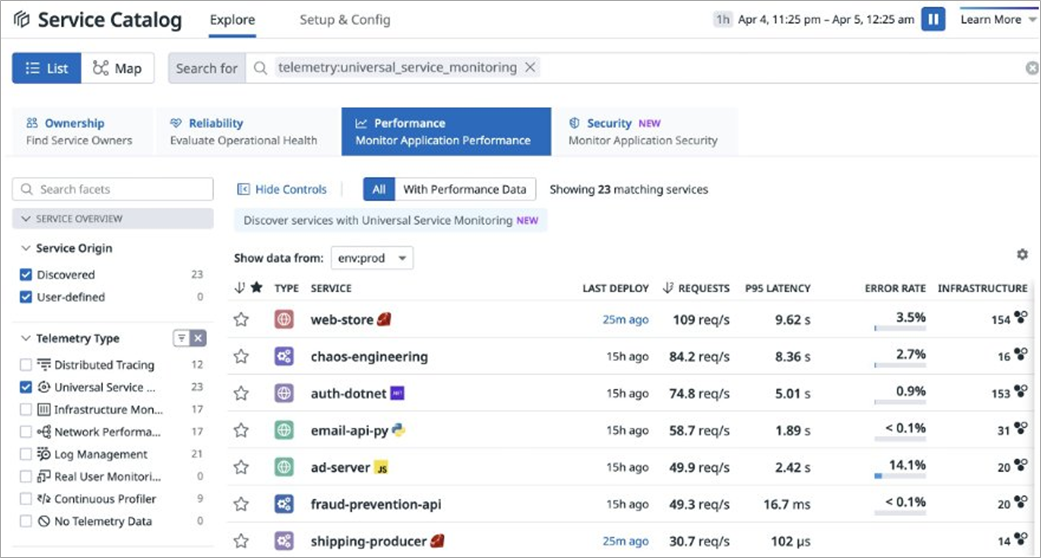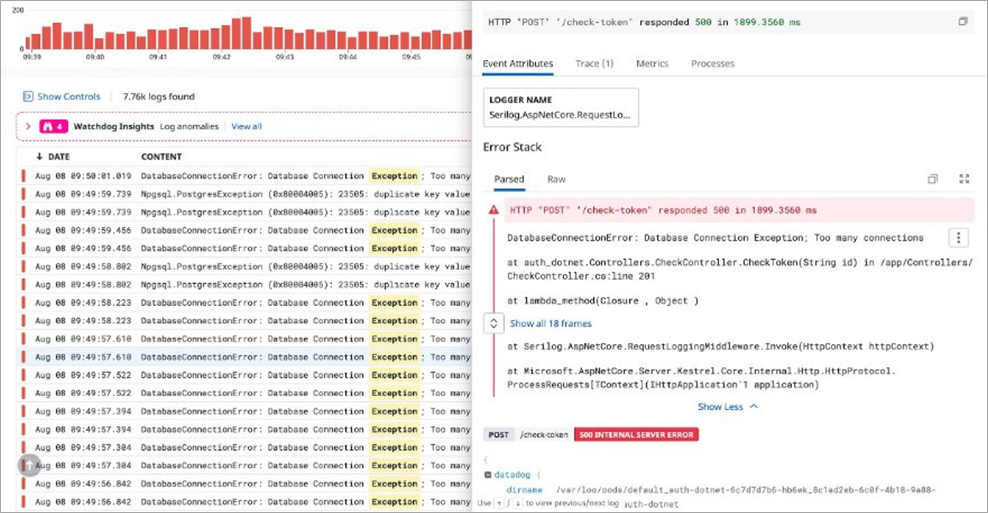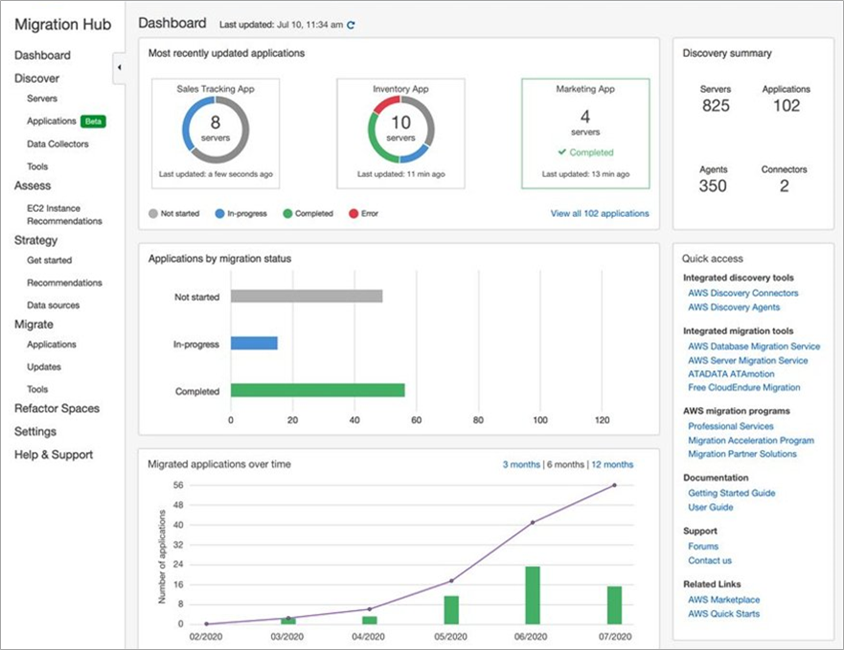AWS Partner Network (APN) Blog
Accelerate AWS Cloud Migrations and Achieve Your Modernization Goals with Datadog
By Ramesh Rajan, Sr. Partner Success Solutions Architect – AWS
By Payal Singh, Sr. Partner Success Solutions Architect – AWS
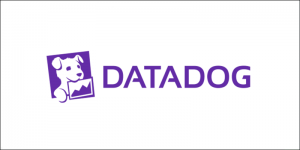 |
| Datadog |
 |
Amazon Web Services (AWS) is a broadly adopted cloud platform, offering advantages like agility, cost savings, elasticity, fast innovation, and support for global deployments.
Many businesses are migrating workloads to the cloud, and this is an evolving process as successful migrations define, capture, and analyze operational telemetry to gain visibility into events and appropriate actions.
AWS provides several services that help increase your monitoring and observability posture. These services include AWS CloudTrail, Amazon CloudWatch, Amazon Virtual Private Cloud (VPC) flow logs, AWS X-Ray traces, Amazon EventBridge events, Elastic Load Balancing, and AWS Network Firewall.
Datadog provides a unified view into the health and performance of your applications and infrastructure across both on-premises and AWS environments.
This post will show you how to accelerate your migration by using Datadog’s observability capabilities to easily track every stage of migration to AWS. We’ll provide an overview of Datadog’s ability to optimize resources for migration, monitor availability of applications, and measure key business metrics around service-level objectives.
Datadog is an AWS Partner and AWS Marketplace Seller with the Migration and Modernization Competency. Datadog is a monitoring service for cloud-scale applications, bringing together data from servers, databases, tools, and services to present a unified view of your entire stack.
Migration Strategies
AWS recommends a three-phase migration approach: Assess, Mobilize, and Migrate and Modernize.
The first phase assesses your current workload/environment to determine how prepared you are for the move. In the next phase, you will lay down the foundation for tooling, define processes, and perform migration of non-critical workloads. During the migrate and modernize phase, you’ll use best practices and lessons learned from the earlier phases, build a blueprint for migration, and use it to perform large-scale deployments.
Let’s dive deeper into the preparation and observability needed for migration during each of these phases.
Assess Phase
In the first phase of a cloud migration, you assess your applications and determine your organization’s readiness for operating in the cloud.
You can use AWS Migration Hub to discover your existing servers, plan migrations, and track the status of each application migration. AWS Migration Hub strategy recommendations can be used to analyze your existing applications to identify process dependencies and runtime environments to help determine the optimal migration pattern for achieving your business goals.
Datadog compliments AWS Migration Hub with application instrumentation at every layer of the application stack to right-size the target environment in AWS. Datadog provides insights into the on-premises infrastructure and application to a) create an application performance baseline; b) discover an application’s dependencies like databases and external connections; and c) help with planning migration waves based on the dependencies uncovered.
At this stage, you’ll be able to visualize your on-premises infrastructure and AWS cloud environment side by side using Datadog’s single pane of glass user interface (UI). The metrics obtained can be used for capacity planning to ensure sufficient resources to satisfy the application requirements.
After integrating your AWS data into the Datadog platform, Datadog provides powerful out-of-the-box visualization tools such as the Infrastructure Host Map and Application Performance Management (APM) Service Map, which provide a high-level overview of your infrastructure health and application dependencies.
Figure 1 – Datadog Service Map.
If you don’t have an APM solution in place for your on-premises apps, Datadog offers Universal Service Monitoring (USM) which can be enabled to automatically detect your services.
USM is an easy way to get baseline performance data for the golden signals metrics to better understand application behavior. With Host Map, Service Map, and Universal Service Monitoring, you get a complete view of your entire application stack using modern views such as Datadog Service Catalog.
Figure 2 – Datadog Service Catalog.
Mobilize Phase
After completing the application assessment, the mobilize phase provides an opportunity to lay the foundation for tooling, process, and culture that will accelerate your migration at scale. A key task in this phase is application instrumentation with Datadog APM.
You can use Datadog Metrics Explorer to assess the health of your application and visualize its functionality in real-time. Once you identify a problem, you can use logs and tracing to further troubleshoot and aim for quicker resolution.
Datadog log management decouples log ingestion from log indexing, enabling you to collect, index, monitor, and process your logs while controlling costs. Datadog’s universal tagging can be used seamlessly to pivot from metrics to logs for faster troubleshooting and problem resolution.
Figure 3 – Datadog Metrics Explorer.
During cloud migration, you can directly compare request latency and other telemetry across on-premises environments and the destination AWS cloud. Performing this kind of comparison makes it easier to benchmark application performance and confirm the new instance types can handle more requests with lower latency.
Auto-instrumentation enables you to start tracing requests across application stacks without touching service code, often with a single command or configuration change.
Figure 4 – Datadog Traces.
AWS Migration Hub provides visibility into your application portfolio and streamlines the migration process by visualizing the connections, servers, and databases of the applications you are migrating.
AWS provides tools for migrating and refactoring applications and databases, while Datadog instrumentation allows you to identify and resolve any application issues before the application is migrated in this stage.
After the mobilize phase, your organization has built a solid foundation in the cloud and is ready to start migration and modernization.
Figure 5 – AWS Migration Hub.
Migrate and Modernize Phase
In the migrate and modernize phase, you are preparing your applications and planning your migration waves for moving to cloud. You can use AWS Application Migration Service to quickly lift and shift (rehost) a large number of servers from physical, virtual, or cloud infrastructure to AWS.
A successful migration requires monitoring for failures and application availability, which gives you insights into potential issues you may encounter in your production application. During cloud migration, just monitoring for failures in not sufficient and you need to assure the applications are performing correctly by meeting the performance goals.
Datadog can be used to monitor and track your applications’ service-level agreements (SLAs) and service-level objectives (SLOs). To gain the greatest benefit, you need ongoing visibility into how well your services are performing relative to your objectives. With Datadog, you can set alerts on your objectives to stay informed about issues even before they a become a problem to put your application’s reliability and availability at risk.
A large number of organizations work on modernizing their infrastructure as part of the migration effort. Modernization includes migrating legacy applications hosted in servers into containers or serverless infrastructure. Datadog provides visibility into managed services like AWS Lambda that powers your serverless applications, and provides real-time visibility into the health and performance of your containerized environments.
After migration/modernization, it’s important to understand and keep an account of resource utilization for applications that are migrated.
Datadog Cloud Cost Management (CCM) integrates with the AWS Billing console and AWS Cost and Usage Reports to understand trends, allocate spend across your organization, and identify inefficiencies in your cloud environment. Datadog CCM allows you to visualize your spend against utilization to identify potential cost savings.
Conclusion
In this post, we looked at how you can accelerate your cloud migration using AWS Migration Hub and Datadog, which provides a single pane of glass with rich visualization tools to monitor your applications running in AWS and on-premises to accelerate your migration journey.
For further reading, you can view the guide on cloud-scale monitoring with AWS and Datadog. To try different monitoring strategies before migrating your workloads, sign up for a Datadog trial.
You can also learn more about Datadog in AWS Marketplace.
Datadog – AWS Partner Spotlight
Datadog is an AWS Partner and monitoring service for cloud-scale applications, bringing together data from servers, databases, tools, and services to present a unified view of your entire stack.
Contact Datadog | Partner Overview | AWS Marketplace | Case Studies
